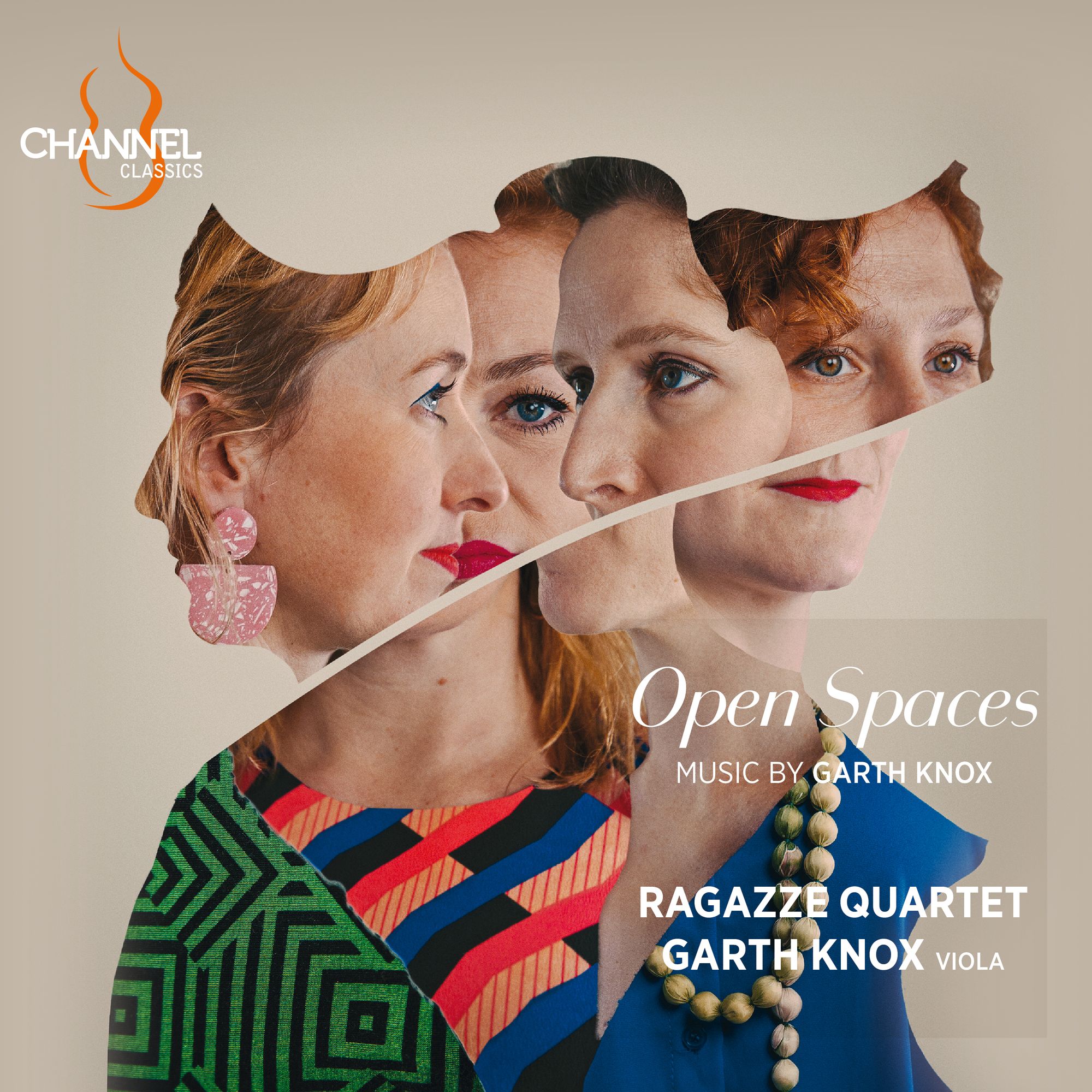Open Spaces: Garth Knox and the Ragazze Quartet
Contains a metaphysical meditation on the multiverse in music .. what's not to love?

Together with ground-breaking composer and violist Garth Knox, the Dutch Ragazze Quartet release two world premiere recordings of Knox’s work and five other recent works. The release coincides with the Kronos Quartet’s ‘Magnum Opus,’ a free linbrary of new works 50 for the Future (Knox was violist with the Arditti String Quartet from 1990 to 1997). Presented by the String Quartet Biennale, 50 for the Future is a groundbreaking educational and artistic tour-de-force in which the Ragazze Quartet and Garth Knox will perform in Amsterdam at the Muziekgebouw; the Ragazze Quartet will perform 11 string quartets in just one weekend!
Here’s an introductory video to the present release, Open Spaces:
Knox’s First String Quartet is entitled Satellites (2015). The fascinating background to “Geostationary,” the first movement, is an attempt to “capture in musi cthe paradox of geostationary stellites in space; standing still is acievable only by travelling at great speed!”. At least one of the satellites “sweeps through a meteor shower,” a;lso musically represented. All this is here:
The slow movement is a “Spectral Sunrise,” beautiful in its otherwrodly dissonance and descriptive in its programme (“inspired by hearing an astronaut of the International Space station talk on the radio about seein 16 spectacular sunrises per day in orbit”). Knox portrays three of the 16; the ensuing darkness is illuminated only by a solo for one of the players. He evenin cludes a brief spacewalk before the final sunrise (including a depiction of trying to walk in a straight line in space!):
Silence is a vital part of the second movement, and the Ragazze Quartet play with total command of their instruments. The disjointed dance of the spacewalk (the most rhythmic - if off-balance - part of the cebtral panel) is amusing, but sits perfectly witin the whole. Finally, “Dimensions” is a metaphysical meditation on the multiverse in music. This is represented by the movement of the bows of the perfoprmers in space, resulting in a collage of timbres. Hails of notes, a stomping dance - this is a fascinating movement:
The two pieces One Finger (2009) and Ten Fingers (2018) separate the two Quartets. They are part of a sequence of études under the collective title of Open Spaces (also the title of the disc). The first is played by Knox himself, the second byKnox and the Ragazze Quartet’s violist, Annemlin Bergkotte. One Finger is drone-like, with a keening melody above:
... in contrast, Ten Fingers is a study in pizzicato (with some added percussive effects on the body of the instruments):
Those Open Spaces pieces (there are two more late in the programme) can be listened to seperately, or as interludes in between the movements of the Second Quartet.
When it comes to the Second Quartet, a Ragazze Quartet commsion, Knox has the following to say:
The Ragazze Quartet are a uniquely exciting and innovative group, and collaborating with them was for me a very stimulating and creative adventure, totally rewarding! When they asked me to write a piece for them, that had a very specific idea in mind: a piece which would make parallels between the 1920s and the decade which was about to begin, the 2020s. We discussed issues like the emancipation of women, the arrival of jazz in American music, and new artistic possibilities to manipulate time thanks to recorded sound and films
Knox also poimts out that the Regazze Quartet is a “uniquely exciting and innovative group”. They certainly have huge energy in the first movement, entitled “Letting Go”. Knox sets up a “noisy, masculine, industrial 1920s soundscape full of agitated, meaningless repeated gestures of machination”. Each instrument drops out of this to find a more serene music (a “liberation, 2020s style”):
The second movement, “Above Our Heads,” presents rarefied textures - two violins duetting in harmonics - interrupted by regular shards of sound
The “slow” movement is a blues: “Lockdown Blues,” something many people can relate to, I’m sure. “Looping staccato” in the cello implies rising pitch but is actually a circularity:
Knox plays with the music of the 1920's brilliantly, in the final movement, “Charleston,” and the performance here is of great character:
Two more Open Spaces separate the Second Quartet from the “other quartet” on the disc (of which more in a moment). Microtonal Blues (2018) is performed by the Ragazze Quartet's cellist, Rebecca Wise, rich of tone - and presenting music that is, very much, a blues:
Sitting next to this is Rick O'Shea (2018) for violin, here first violinist Rosa Arnold. A piece that concentrates on musical ricochet, it is virtuoso through and through (so is, it truens out, Arnold herself). The piece ends in a real frenzy:
Finally, Quartet for One (2020), another lockdown piece. This is a “String Quartet for Solo Viola” consisting of four short movement (non reaches two minutes duration). A play on the idea of a child’s imaginary friend(s), Quartet for One ...
... happens inside the idea of a viola player who dreams of giving a concert with a string quartet in front of an imaginary audience. Although alone, the viola player really does play a quartet! Each of the four strings on the viola corresponds to an insrument of the quartet, and as each instrument enters, the viola occupies their ‘chair’ and plays on ‘their’ string (the stage is set with 4 stands and 4 chairs). To imitate the richness of the deep cello sound, the bottom string of the viola is lowered to A.
Here’s the last movement, “Grand Finale Virtuoso”. Knox’s playing is spectacular:
Just to let you know there is a MAHOOSIVE discount on this disc: it was full price (£14.48) and is now £4.06, a saving of over ten pounds!
